Calathea zebrina
Zebra Plant
A striking indoor plant that doesn’t overpower other specimens in the same room, Calathea zebrina is a welcome addition to any room that receives bright, indirect light.
Velevety dark green leaves are highlighted by showy, broad chartreuse stripes which lend Calathea zebrina its name.
Want to be notified when this product is back in stock?
Plant Biography
Also known as Goeppertia zebrina, this plant is native to southeastern Brazil where it lives in the lowlight conditions of the topical rainforest floor.
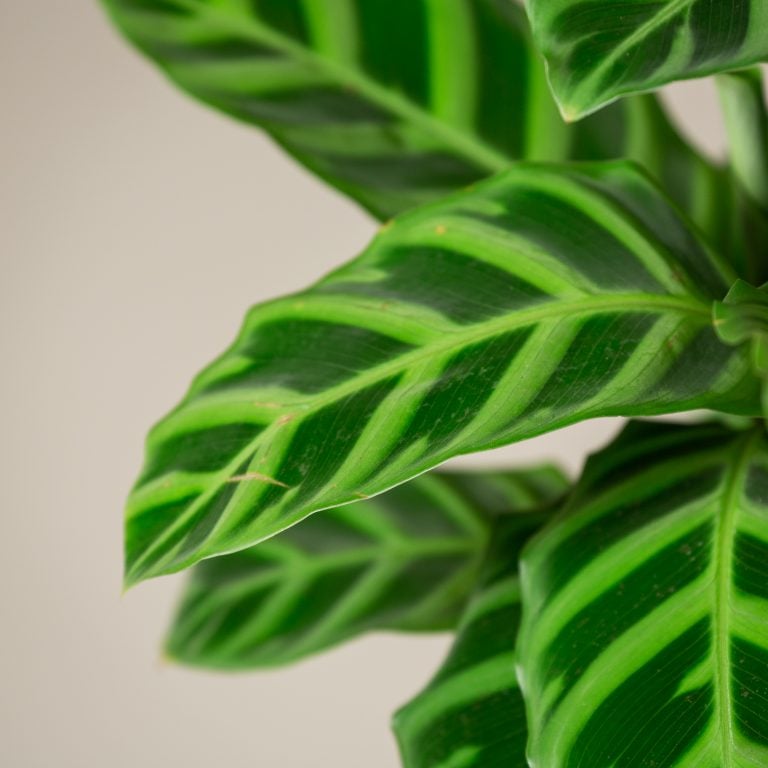
Expert Tip
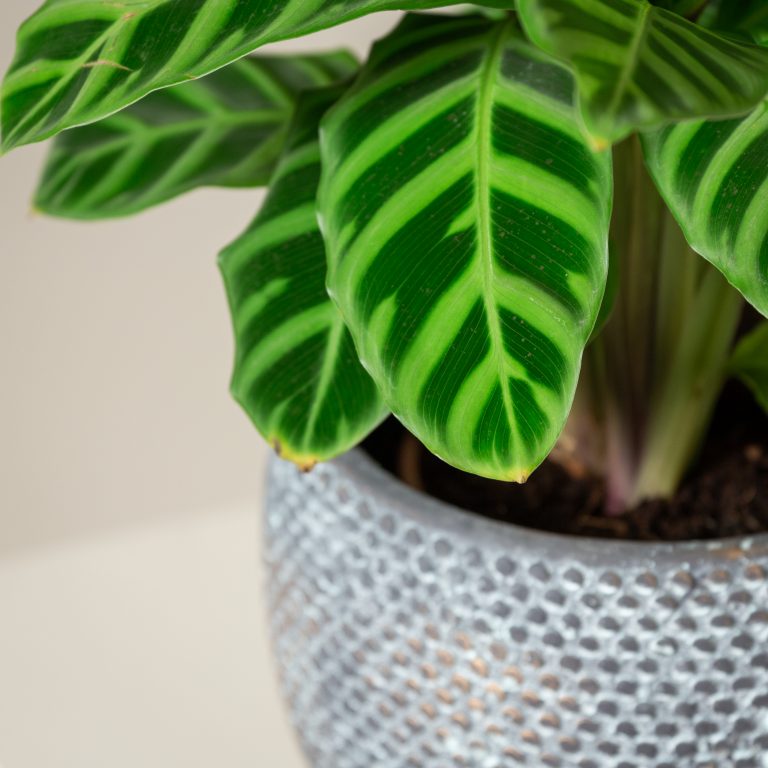
Why Prayer Plants 'Pray'
As a member of the Prayer Plant family, the leaves of this Calathea will characteristically ‘pray’, folding up at night before re-opening again as the morning light levels rise.
At the base of each leaf is a joint-like thickening called the pulvinus, which swells and shrinks in response to pressure developed in the leaves.
This movement of the leaves is a process known as nyctinasty, which serves a number of purposes.
It allows the plant to absorb as much light as possible in its low light rainforest environment, to help absorb and retain water, and to reduce the risk of fungi and bacteria forming on their leaves.
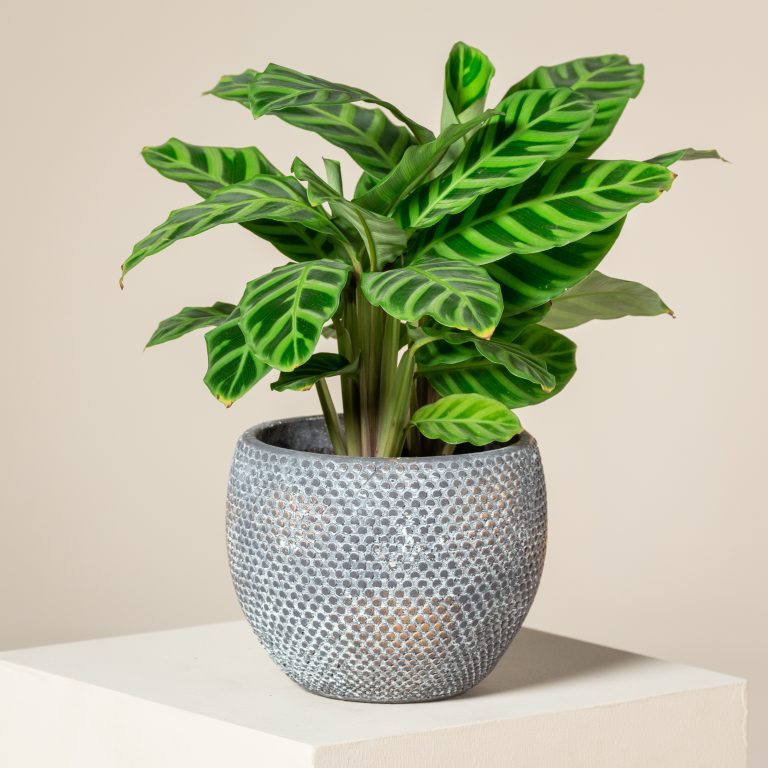
Care & Size Guidance
Though in the wild Calathea zebrina produces white to purple flowers in bloom, these flowers are rarely seen when cultivated indoors.
A place with bright but indirect light is ideal. Avoid south facing spots with too much intense direct sunlight, unless you diffuse the light with a sheer curtain.
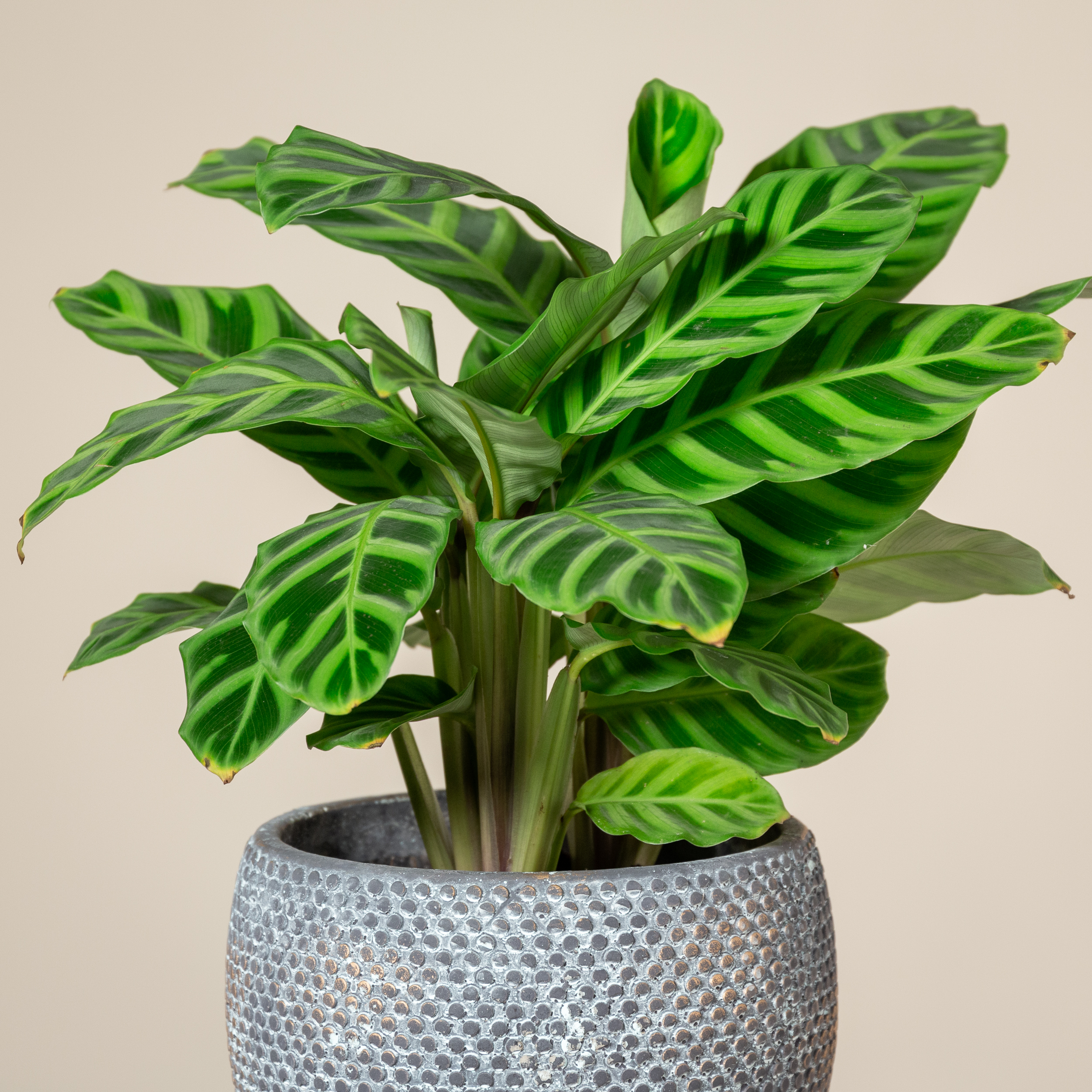


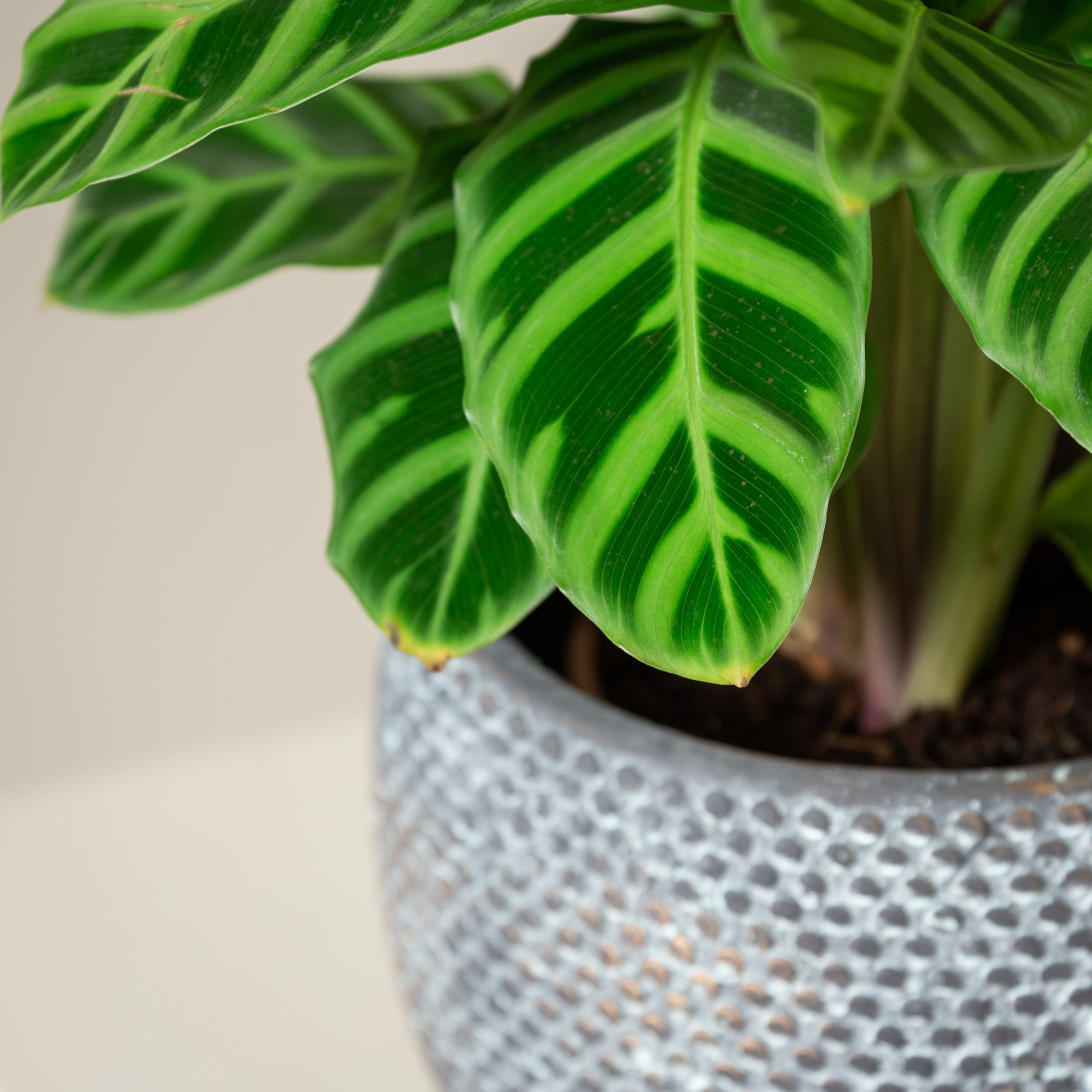

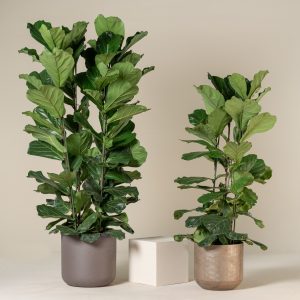
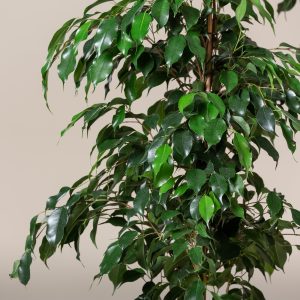
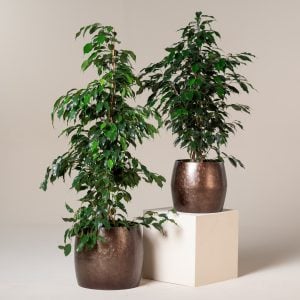
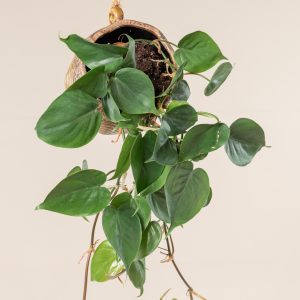
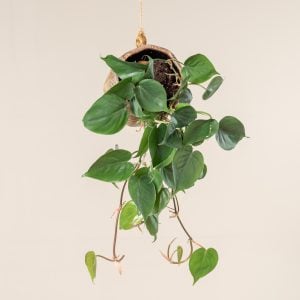
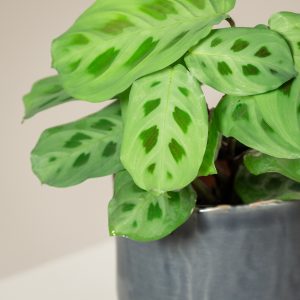
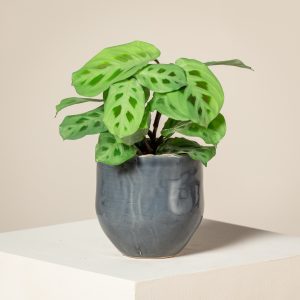
Reviews
There are no reviews yet.